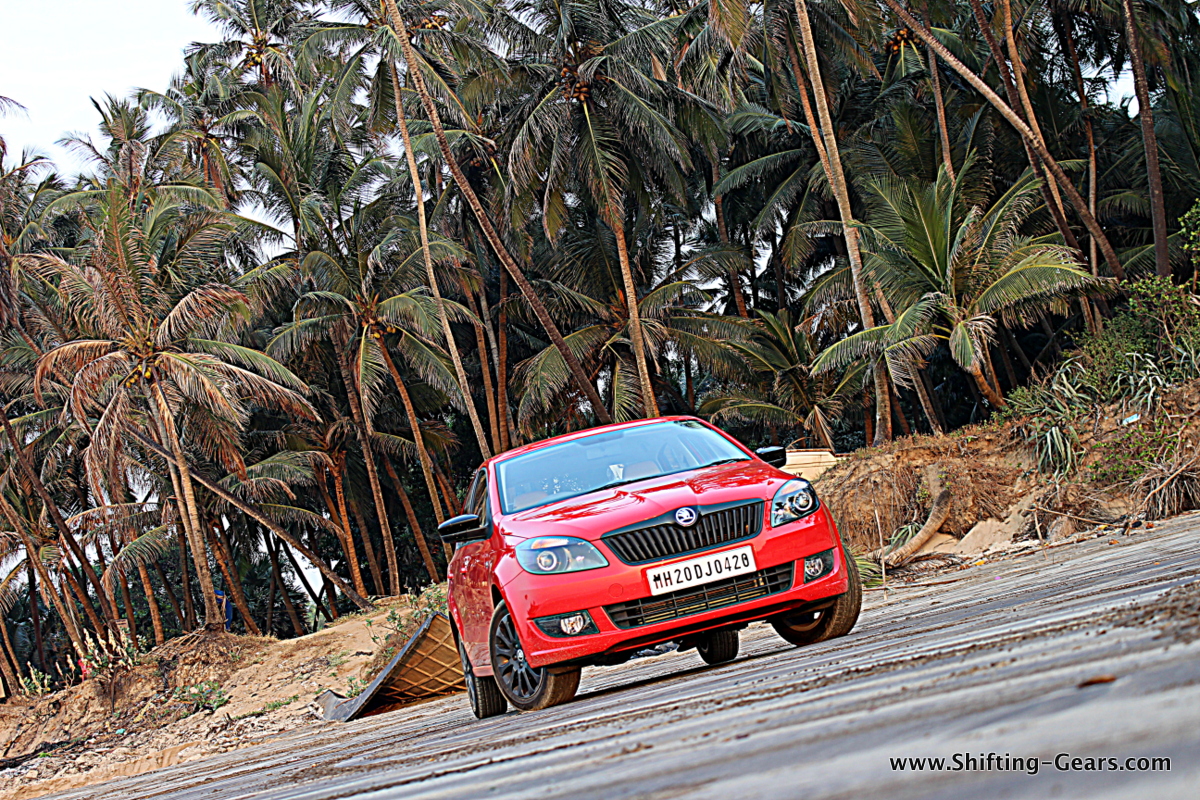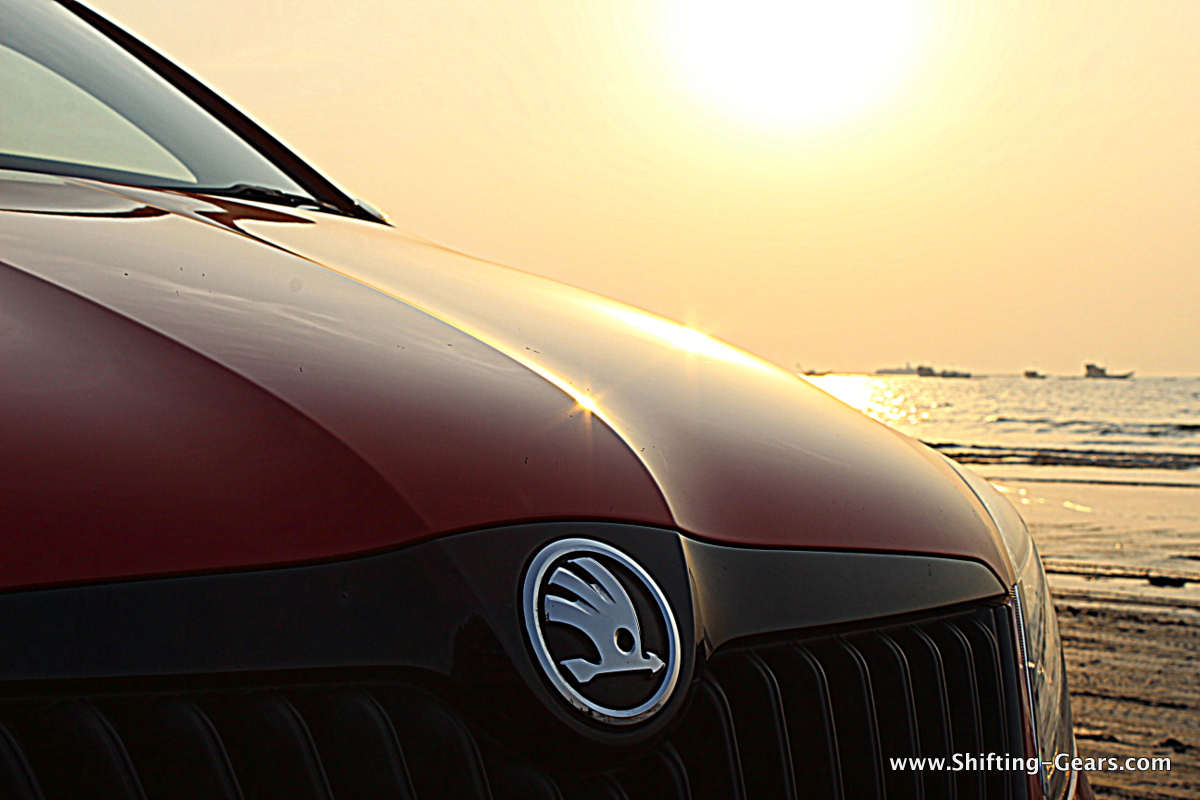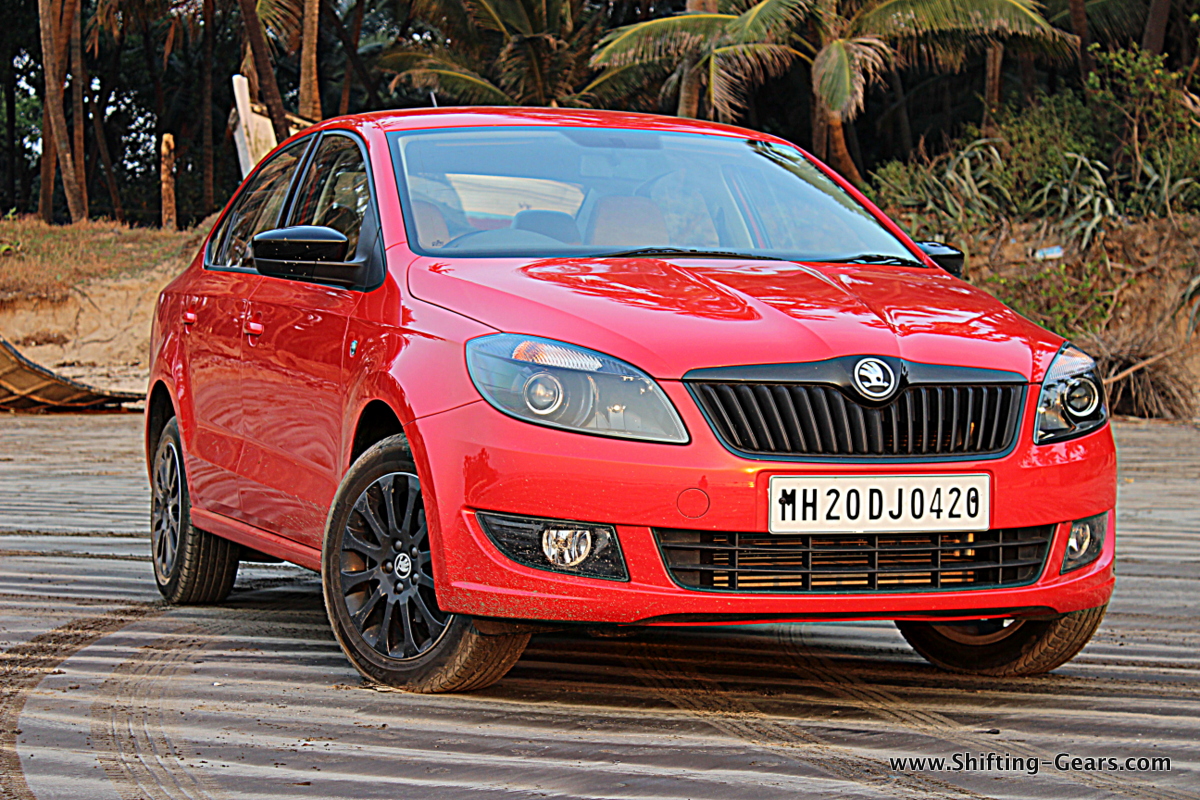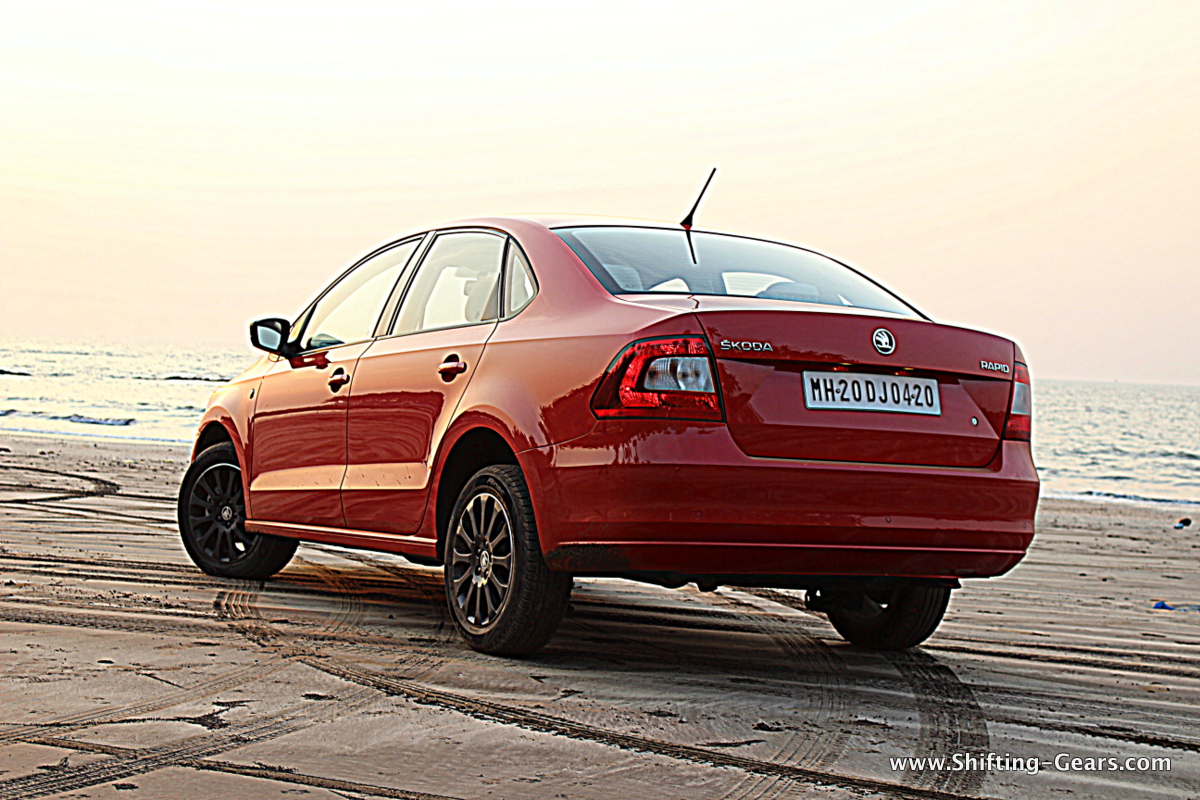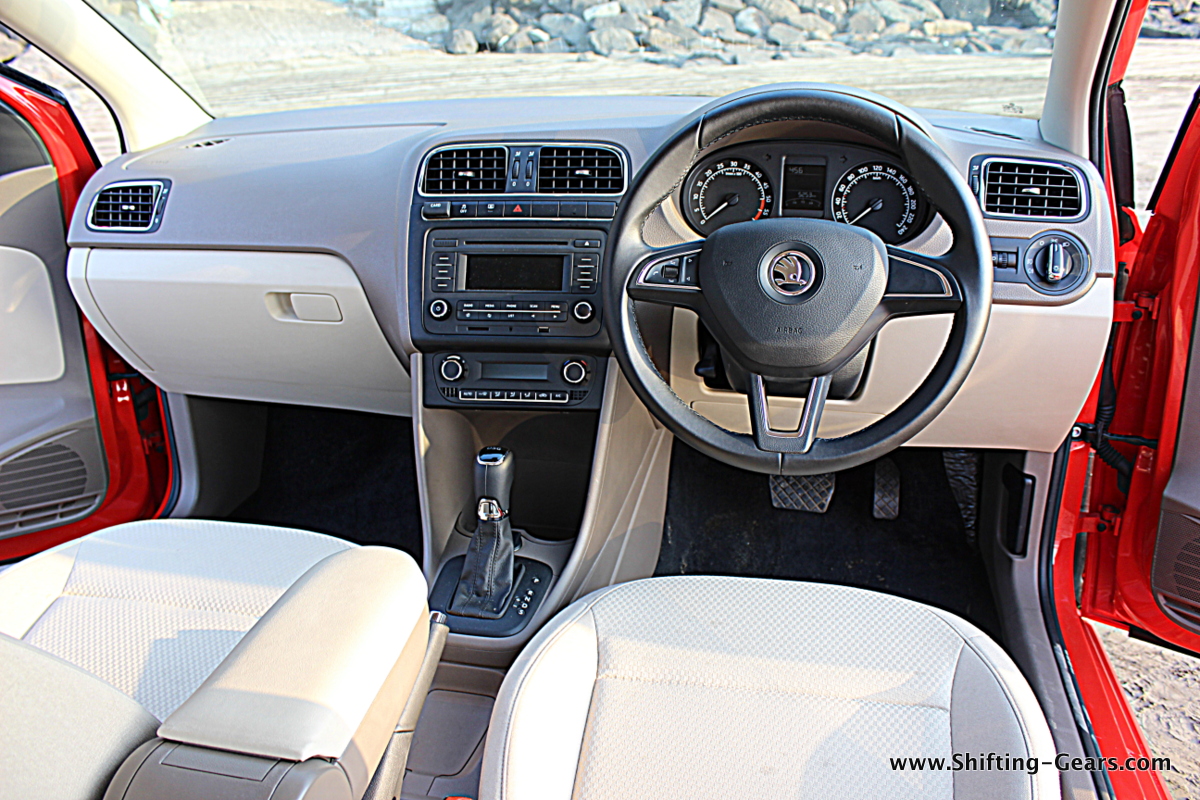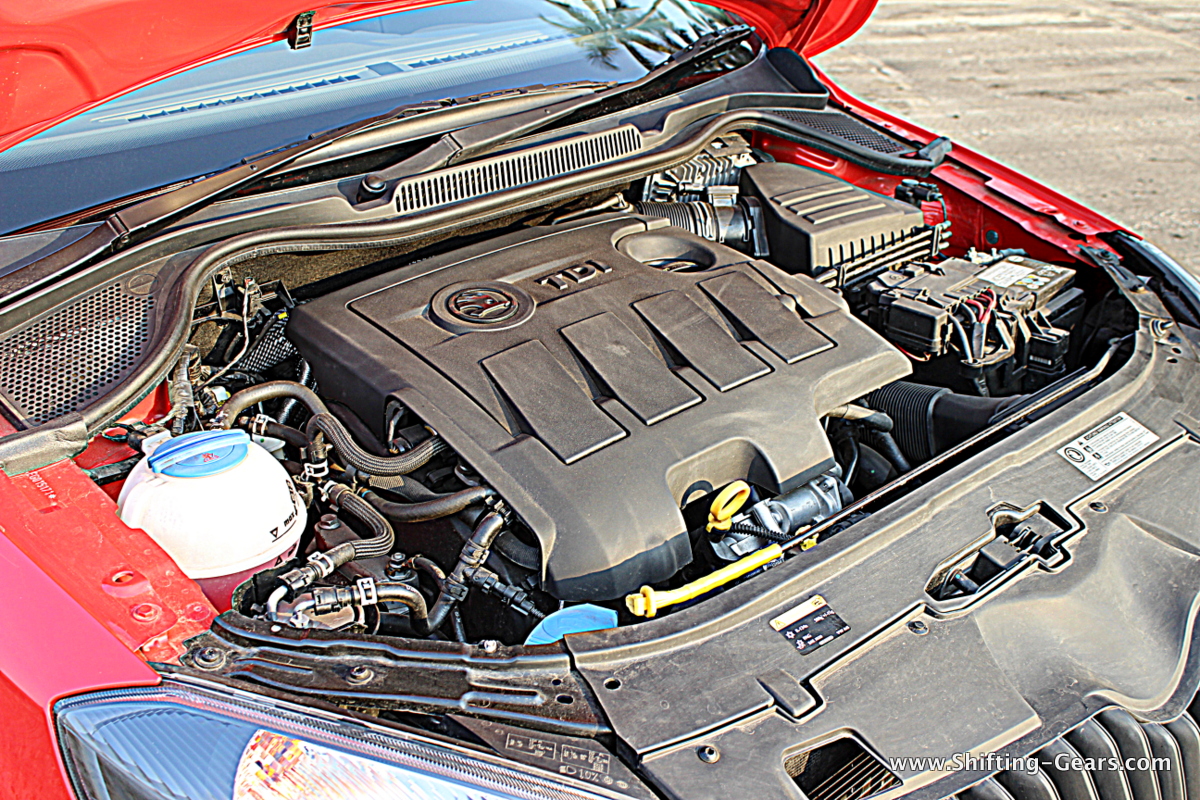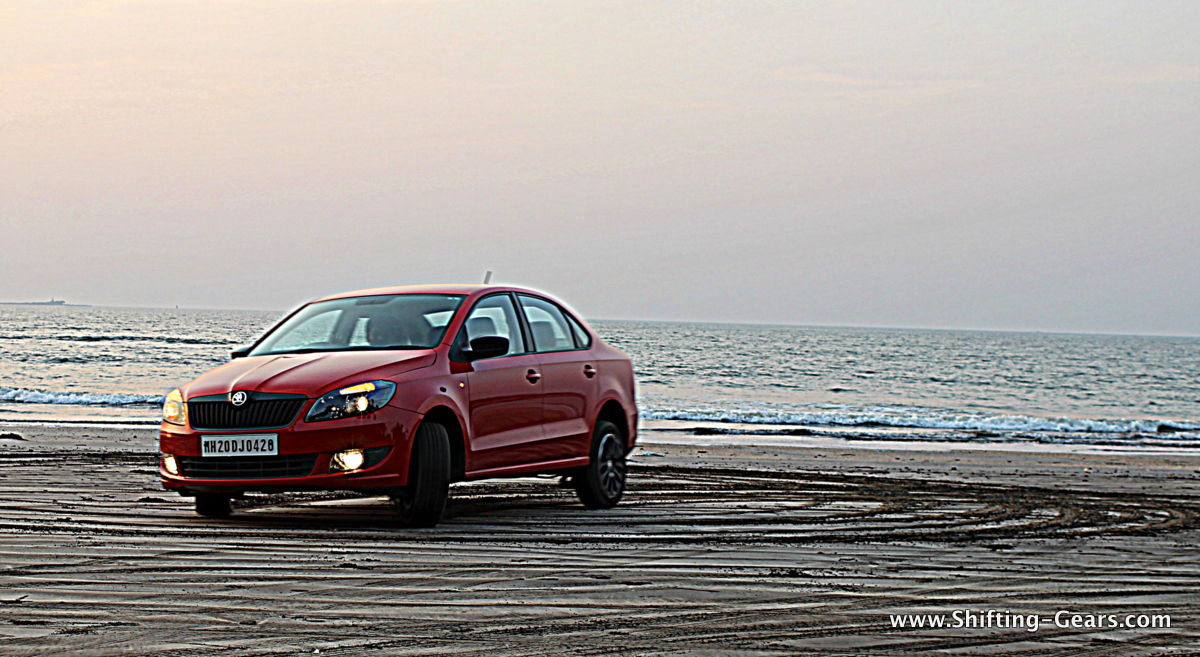Skoda Auto India Private Limited has been operating in India since November 2001. Production facility for the Czech brand is located near Aurangabad in Maharashtra. Skoda currently sells the Fabia, Rapid, Yeti, Octavia and Superb in India. When it started sales back in 2002, the Octavia was the first locally built Skoda to be launched in India. Till date, the old Skoda Octavia is a favourite even in the used car market and offers good bang for the buck. But things are really not working well for the manufacturer. For a brand which has been present in the industry for well over a decade, as of October 2014, it had a market share of only 0.61%. That’s the lowest amongst all manufacturers, a bit higher than HM-Mitsubishi though. Even Datsun, which sells only one product has more market share than Skoda does. Skoda has well priced, premium products in their respective segments coupled with fuel efficient engines, what’s going wrong then?
We all by now know that the Skoda Rapid and Volkswagen Vento are badge engineered twins. Both cars share the same underpinnings and most of the mechanicals, except for a few things here and there. But this neither helped Volkswagen, nor Skoda. Both the Rapid and Vento sell around 1,000-1,500 units a month. Both cars are premium inside out, and have the typical German build quality which a lot of people out there love. Yet, the sales numbers are way behind the segment leaders.
Diesel automatics under Rs. 10 lakh in India was an untouched territory for most manufacturers. In the C2 sedan segment, it was only the Hyundai Verna which offered an automatic gearbox mated to the 1.6L diesel motor. For 2014, the VW Group, inclusive of Skoda, came up with two changes. One, a downsized version of their 1.6L diesel engine, now with a capacity of 1.5L and mated to a DSG DQ200 automatic gearbox. It has taken rather long for Skoda to come out with this combination although they had both the engine and gearbox ready since day 1. The DQ200 is a 7-speed DSG gearbox while the bigger Octavia & Superb use a DQ250 which is a 6-speed DSG gearbox. The DQ200 is specifically meant for cars with smaller engines with torque generation up to 250 Nm, which the Rapid does develop, in exact numbers.
So what does the winning formula feel like? A diesel motor and a DSG gearbox; does it offer the best of both worlds? We took the Rapid for a spin to find out…
Exteriors:
The Rapid DSG is offered only in two trim levels, Ambition Plus and Elegance. The variant we drove was a ‘Black Edition’ which customers can opt for at an additional Rs. 13,000.
Although the model year change brings in a new downsized engine, there are no changes on the exteriors. At the front, the Rapid gets a typical Skoda grille with multiple vertical slats. This is all-black if you opt for the black edition, otherwise gets a chrome surround. Front air dam remain identical to what we’ve been looking at since 2011. Headlamp shape also sees no changes, however a projector setup was introduced sometime back. The black edition has smoked out headlamps. Even the fog lamps see no changes and are blackened for the black edition. Bonnet carries the same crease lines since day 1. The black edition is a refreshing change to the exterior styling since there is no new design detailing. Those looking for a sporty look will surely like this. Especially on the red coloured model we drove, we managed to turn quite a few eyeballs.
On the side, there are absolutely no sheet metal changes or any other addition. Skoda should have used this opportunity to add a request sensor on the door handles to offer true keyless entry. The black edition gets 15″, 12-spoke wheels with a chrome finish towards the edge. The finish is so brilliant, that you cannot feel the difference in the black and chrome section, it’s been finished brilliantly. The alloys however get covered in dust very easily. The black edition also gets the ORVMs painted in black. Another missed opportunity is that the Rapid still does not get turn indicators mounted on the ORVMs. Is there a reason why Skoda is not offering these features which almost all B2 segment hatchbacks are now having? B-pillars are blackened and one can opt for black door strips and black roof vinyl at the dealer level.
At the back, there is nothing new to talk about. The Rapid carries forward with the same C-shaped tail lamps. No changes to the rear bumpers or the bootlid. Reverse camera is neatly tucked in next to the number plate bulbs and parking sensors on the rear bumpers are body coloured as well. Skoda provides a short antenna mounted on the roof, at the back.
Overall, if you’ll were expecting a facelift, then the 2014 Skoda Rapid delivers less in that department. Actually it doesn’t deliver anything in that department. The black edition is simply a different colour on the same components, except for the alloy wheels which are all-new. Still, the Rapid is a proportionate, good looking sedan available in the market, and what matters most in the 2014 model year changes is more on the mechanical front than on the exteriors.
Interiors:
Just like the exteriors, the interiors also see minimum changes. Interior colour scheme is in the brown and beige combo. This doesn’t suit all, but one can surely live with it. A more conventional black and beige or grey and beige combo would have appealed to a wider audience though. Dashboard layout on the Rapid remains identical. There is no change in placement of any component. The 4-spoke steering wheel has now been replaced by a 3-spoke unit wrapped in leather with audio and bluetooth controls. Instrument cluster has been revised a bit. The speed and RPM markings inside the dial are now above the circular markings and not on the inside. The RPM dial also gets a prominent redline now and the needles are different too. The backlit has also changed from green to white now. MID is now slightly bigger than the previous model, although slots in the same place. MID displays information such as DTE, time, real time fuel efficiency, selected gear, trip meter, odometer, speed and outside temperature. The control stalks on the steering wheel house the MID toggle switch on the RHS stalk head and cruise control on the LHS stalk head.
Head unit has been changed and now offers bluetooth connectivity and is compatible USB, Aux, & SD card. The can also be operated via an iOS or Android app. Display is backlit in white and dumps the previous green display screen. The head unit also works as a screen for the reversing camera. Sound quality of the stock stereo system is more than adequate and one doesn’t need to upgrade. The rapid gets automatic climate control on the higher variants and the controls remain unchanged. The rotary knobs feel very premium on touch and the AC manages to keep he cabin cool even under the hot sun. Not to forget the availability of rear AC vents for the passengers sitting behind.
The highlight change on the inside the the DSG gear lever. This has been lifted off from the bigger Octavia and looks fantastic as well as falls in your hand perfectly. Wrapped in leather and with chrome accents, the gear stick also allows you to change gears manually in the D-Tiptronic mode.
Seats on the Rapid are beige and made up of fabric. Leather isn’t available even as an option. The seat colour is so light, that frequent cleaning is a must. We recommend an aftermarket seat cover straight at the time of delivery. Seats offer decent all-round support and are comfortable even for the taller occupants. The long travel range coupled with the seat height adjustment will keep drivers of all heights happy. Skoda also offers an adjustable centre armrest which lets you rest your left arm while the DSG is doing all that is required. Ergonomics are spot on and the driver doesn’t have to divert his attention too much. All four windows get one touch auto up / down with anti-pinch function.
Jump in the back seat and you’ll instantly notice the abundant legroom available. While this might not be as massive as the Nissan Sunny or Tata Manza, it is better than the likes of a Hyundai Verna and Ford Fiesta. Ingress and egress is a little effort since the car squats lower, but better than the Verna which is lower than this. Elderly will not have too much of a problem though since the doors open wide enough. Seat back angle is not as reclined as on the Sunny and Manza but is still liveable. Availability of headroom is also in decent quantity. Carrying 5 however is a difficult task in the Rapid, primarily because of the massive transmission hump. This reduces the legroom available for the 5th passenger and things won’t be comfortable except for short city runs.
460 litres of available bootspace is good enough to gulp your airport luggage. Rear seats do not have a 60:40 split, and neither do they fold down. This limits practicality when you want more carrying space. Spare wheel placed below the boot floor is not an alloy wheel.
Engine, performance & handling:
Since we drove only the 1.5L diesel DSG variant, our driving impressions are focused only on that particular variant.
The Rapid is now powered by a new 1.5L, TDI, 4-cylinder, DOHC, 16 valve diesel motor producing 105 PS of power @ 4,400 RPM and 250 Nm of torque @ 1,500-2,500 RPM. Although this is a downsized version of the previous 1.6L diesel motor, power and torque delivery remains identical, at an identical revv range as well. Fire up the engine and the clattery motor is fairly audible even inside the cabin. The likes of the Hyundai Verna are far more refined in terms of NVH levels. At high RPMs, the engine sounds gruff and the engine noise creeps inside the cabin a bit too much.
Slot it in ‘D’ and just release the brake pedal. The Rapid coupled with the DSG gearbox makes instant progress without any fuss. Gearshift quality courtesy of the DSG is much, much better than what your experienced driver can manage. The car likes to upshift quickly, as early as 10 kmph for the second gear to keep the fuel efficiency numbers on the greener side. Power delivery from the engine is very linear compared to the previous 1.6L motor. Since the car continues to upshift early, the RPM levels are maintained on the lower side at all times, hence not allowing the engine noise too much on the inside. Within the city, the DSG is butter smooth to drive around, you do feel the gearshift, but way lesser than a conventional automatic. You can only hear the engine downshifting or upshifting, but there is no jerky gear change feeling at all. The Rapid DSG’s fuel efficiency rating is a 21.66 kmpl, higher than the 21.14 kmpl with a manual gearbox. A light foot is all you need in city conditions to keep making smooth progress in the Rapid DSG.
On the highways, the 105 PS motor packs sufficient punch. On kick-down, the car make swift progress but continues to upshift a bit earlier than you would expect. This doesn’t make things feel slow though. The car accelerates well by segment standards, and much smoother than in a manual variant. In ‘D’ mode, the engine doesn’t pull all the way to the redline though, it makes the change halfway managing the speed and fuel well. Upshifts are quick and will never catch you with a surprise lag during an overtaking maneuver. 7 gears also ensure that the car runs on a lazy RPM while doing triple digit speeds. The extra cog manages to churn out more fuel efficiency too when on a long highway trip.
In case you want to have fun, you can slot in the ‘S’ mode. The car now revvs all the way to the redline and will frequently downshift to keep you in the power band. The throttle response also feels slightly more crsip in the ‘S’ mode and enthusiasts will love to drive this way on their favoutire twisties. The engine however doesn’t sound very revv happy while doing so. Engine note is gruff and fairly audible inside the cabin. Occupants will surely know what the driver is up to because of the engine noise creeping in. But at times when you do want to have some fun, the ‘S’ mode apart from revving all the way up, also provides you ample engine braking to enhanced vehicle control. One can also chose to use the tiptronic function and change gears manually. Pushing the lever up will upshift and pulling it down will downshift. This mode also allows you to redline and if you miss to upshift, the car will do it on its own. Don’t consider this as an interference though. The car will take things into its own hands only if you inch closer to the limiter, otherwise it lets you play across the revv range. If you slow down too much for a particular gear, the engine downshifts to prevent stalling. Paddle shifts would have sweetened the deal, but you don’t always get everything you dream about, do you…
The Rapid runs in a very composed manner on city roads as well as on the highways. The suspension tune however is on the stiffer side. For example, if you move over a speed bump faster than you should, the rear struts will push the wheels hard and the car gives out a very unsettling thud. This will clearly not be loved by the rear seat occupants. This stiff suspension however works well for the highways. It keeps the car grounded at all times and there is very little vertical movement if any even on high speeds. Steering wheel is light and provides decent feedback. It is precise and doesn’t feel to vague. The driver will know what his front wheels are up to at all times. It doesn’t weigh up as much as we would have liked on high speeds, but not many people will complaint about this.
Skoda offers ESC (electronic stability control), Hill Hold, ABS and dual airbags with the DSG variant and this makes the Rapid automatic a very potent package in the segment. The ESC and hill hold add a lot more value in real time than on paper. If you’re looking for a self-drive diesel automatic, the Rapid DSG is a strong contender in the segment. With ample space on offer, almost all features one needs by segment standards, and with a diesel + automatic combo, the Rapid offers everything one needs to drive around in the city as well as on the highways. The DSG gearbox and its butter smooth nature is a charm to use and will keep the sedate as well as enthusiastic drivers happy.

